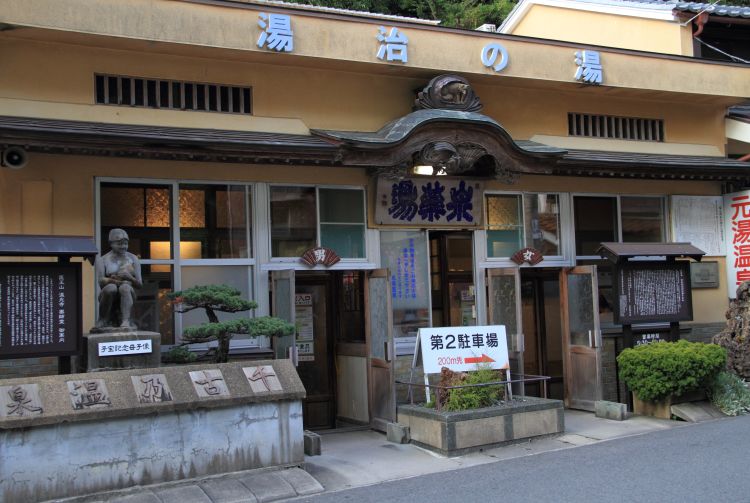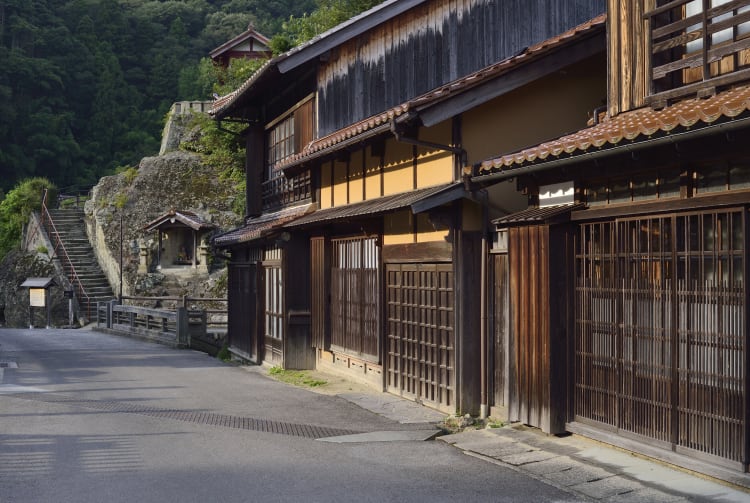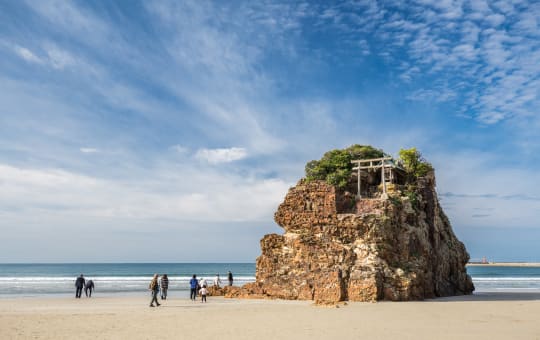Once one of the greatest silver mines in the world
Iwami Ginzan literally means “Silver Mountain of Iwami,” and at one time a third of the world's supply of this precious metal came from its mines.
The mine area is spread across a group of mountains. The World Heritage site also includes Omori, the picturesque small town that administered and serviced the mines, and two ports on the coast, Yunotsu and Maji, which served as the transit points where the silver was shipped out and supplies came in.
Don't Miss
- The World Heritage Center where you can learn everything about the area
- Temples such as Rakanji
- Beautiful walking paths
How to Get There
You can reach Iwami Ginzan via train and bus from Izumo and Matsue.
Trains run from Matsue and Izumo stations to Odashi Station. The most common route to the site is from Odashi Station on the main Sanin Line, 25 minutes away. Other, less frequent buses come from Iwami-Kawamoto Station on the Sanko Line, just 35 minutes away. The Iwami Ginzan bus stop is at the World Heritage Center, where all the buses stop. Odashi Station is 50 minutes from Matsue.
Quick Facts
When production of the mine was at its peak in the 16th and 17th centuries, it produced a third of the world's silver
At one time a quarter of a million people worked at or in support of the mine
Getting a handle on the area
Get oriented at the new World Heritage Center to figure out what you want to see and how to navigate the area. The World Heritage Center is also where the buses arrive. Much of the World Heritage site is not accessible to vehicles, so shuttle buses will take you to the different spots where you can start exploring.
The displays in this big, new museum are varied and cover many different aspects of the mine, including the history, the science, the engineering, and the life of the people. The staff at the reception area can give you a printed handout in English or you can borrow an iPad to read and hear descriptions of what you are seeing.
Explore the town that served the mine
A shuttle bus runs from the center to both the top and bottom of Omori . A quiet footpath heads up the left side of the valley through woodlands and past stone stairways that ascend the mountainside to where there were once many temples. Life as a miner was brutal and short, and many temples were needed to provide funeral services.

Before heading up the valley, stop in at Rakanji. Just across the road three small stone bridges take you to a series of caves dug into the rock face by the miners that contain 500 statues of rakan, the disciples of the Buddha, every one of which has quite a different pose and expression.
Walking the silver roads
The two walking routes along the old roads that connected the mine to the sea ports are the eight-kilometer route to Tomogaura near Maji Station and the 12-kilometer route to Okidomari near Yunotsu . Of the two, the Okidomari route is the best developed as it is part of the Chugoku Nature Trail, but as Yunotsu and Maji are connected by train it would be feasible to do the complete circle in a day if you're up for the exercise.
A place to soothe your tired feet
The hot spring resort of Yunotsu , also part of the World Heritage sites, is a popular place to stay. You could leave from there, take the route passing through the beautiful and serene countryside before climbing up to the pass and dropping down to the mine area and then to Omori.

Alternatively, you could start your visit at Omori, head up to the mine and then carry on up and over the mountain before the long descent down to Yunotsu.

























































